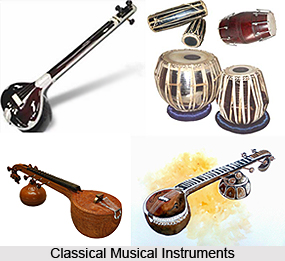 Vedas and Indian Classical Music have a very deep connection harking back to the origins of Indian Classical Music system itself. The Vedas form a part of the oldest written scriptures in India dating perhaps from 1500 BCE. The term Veda literally means knowledge and the Vedas are comprised of sacred hymns, poetic descriptions of the gods and nature, rituals, and blessings. Originally, they were passed on orally, memorized by an initiated class of priests (Brahmins), and the very act of hearing them was considered auspicious. Understanding their profound philosophical implications was not considered too important at the time. This feeling of the sacredness in simply hearing has become basic to the ideal of the Indian musical system.
Vedas and Indian Classical Music have a very deep connection harking back to the origins of Indian Classical Music system itself. The Vedas form a part of the oldest written scriptures in India dating perhaps from 1500 BCE. The term Veda literally means knowledge and the Vedas are comprised of sacred hymns, poetic descriptions of the gods and nature, rituals, and blessings. Originally, they were passed on orally, memorized by an initiated class of priests (Brahmins), and the very act of hearing them was considered auspicious. Understanding their profound philosophical implications was not considered too important at the time. This feeling of the sacredness in simply hearing has become basic to the ideal of the Indian musical system.
The Sama Veda is considered to be the historical origin of musical language. In fact it is to the Vedas that the ancient roots of the modern musical style can be traced. Some of the features, which later characterize the classical traditions, can be seen in nascent form in this style of chant. These are- It was chanted from memory only by specialists (an oral tradition); a single, unaccompanied melodic line used all seven notes; Simply hearing these chants was considered auspicious (Nad- Brahma); The syllable became a central focus of the sound (over the textual meaning); Tropes (verbal insertions), repetitions, and Vikriti patterns were used.
Most certainly the meaning of these Vedic texts is important and extensive commentaries, such as the Upanishads, Brahmanas, Aranyakas and Indian Puranas explain in great detail the philosophical and theological facets of the Vedic message (collectively called Vedanta). But for musicians, it was the sound of the language, Sanskrit, which was most important with specific emphasis on the independent syllables of that language. Especially important among these was the syllable Om, which stands for the sound of the infinite and eternal cosmos itself.




















